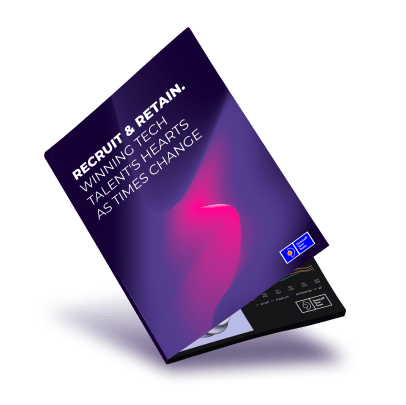Did you know that, according to the study by University of California, specialists need about 20 minutes on average to return to the task after the interruption? The time of each team member is especially valuable in the IT sector, where the average spending per hire is quite high and is constantly growing.
Integrated Development Environments, or IDEs, make the processes smoother by providing developers with a one-stop shop for coding, testing, and debugging applications. IDEs reduce the cost of developing software by levelling up developers’ concentration and, as a result, productivity.
Altogether, when you provide your tech team with convenient working conditions, you will most likely extend an average developer’s life cycle within your company and avoid allocating additional hiring budgets for replacing team players.
With a myriad of IDE features available, choosing the right IDE can be overwhelming. Want to make a decision that will pay off? Stick to the 10 essential features your IDE should have.
10 IDE Common Features To Review First
As with all the markets, the market of IDEs has its leaders. If you consider the most popular IDEs, you most likely will find some similar basic options. We’ve compiled the IDE features summary — the checklist which can help you make sure the solution you want to implement is a first-class solution.
#1. User-Friendly Interface
It is your gateway to the development world. The interface should be user-friendly, and attractive. A development environment with a cluttered or confusing interface can hamper your productivity and increase frustration.
#2. Code Debugging Tools

Bugs are an inevitable part of software development. That's why IDE common features should include robust debugging tools, which enable you to walk through your code easily, pinpointing and resolving problems.
#3. Code Editor
A powerful code editor is responsible for IDE features like syntax highlighting, code folding, and navigation through codebases. It can be mind-boggling to realize how much coding tools have changed since utilizing simple text editors, aka WordPad.
#4. Code Compiler
One of the features of IDE automatization is an internal compiler, which verifies the code's functionality within the IDE itself. Normally, the compilation outcomes appear in a distinct interface within the IDE.
Keep in mind, any compilers cannot grant your code will be performing as planned. That’s why it would be great if your preferred IDE supports the convenient creation of unit tests with the help of solutions as in Virtual Studio or actions like in IntelliJ IDEA.
Want to engage first-class developers into your project?
Request candidates#5. Language Support
Your integrated development environment should support multiple programming languages. Whether you're a Python guru or a Java aficionado, having an IDE that accommodates your preferred language is essential. This IDE feature ensures you can seamlessly switch between projects without having to learn (and buy in many cases) a new tool each time.
#6. Extensibility
Developer's needs are unique, and the ability to customize your IDE is invaluable. Look for IDEs that support plugins or extensions like verification tools, common messengers, templates, etc. This feature lets you tailor your development environment by adding or removing functionality as per your requirements.
#7. Version Control Integration

An IDE integrated with version control systems like Git can streamline the development workflow. It allows for easy code sharing, tracking changes, and managing collaborative projects.
#8. Code Autocompletion
Coding can be a repetitive task, so automatic suggestions while coding come in handy. An IDE every developer would like should offer intelligent code autocompletion that can provide you with variable names, function signatures, and even entire code snippets. Such a smart automatization belongs to those features of an IDE which save time and eliminate the number of typos and syntax errors.
#9. Built-In Terminal
Switching between your IDE and a separate terminal window can disrupt your workflow. With an IDE that includes a built-in terminal, you can run commands or scripts, and even manage your version control without leaving the IDE.
#10. Incorporating Libraries
Fortunately, you're not obliged to start every coding task from scratch, as there are fellow developers on the internet who have already created code that can be harnessed as a library. There are pre-existing functions developed by others, ready for you to reuse in your project. In such situations, IDE should automatically handle the import of the desired functions for you.
Bonus. Code Analysis and Refactoring

Maintaining clean and efficient code is essential for long-term project success. Look for IDEs that offer code analysis and code refactoring tools. These 2 features of IDE code management can identify code smells or performance bottlenecks, and suggest how to improve your codebase's quality.
How to Check an IDE’s Compatibility with Your Custom Needs
Selecting the right IDE is crucial for your unique development journey.
We can help you find developers experienced with your preferred IDE and grow faster.
Start hiring nowHere are some tips to help you make an informed decision by comparing features of IDE utilization with your project needs.
📍 Evaluate Your Niche Requirements. Consider the type of projects you work on and the programming languages you use. Different IDEs cater to different niches.
📍 Pick a Suitable Price Plan. Some IDEs are free, while others require a subscription or a one-time purchase. Factor in your budget and long-term commitment when making your decision.
📍 Give an IDE a Try. Most IDEs offer free trials or open-source versions, so you can test the IDE's features and see if they suit your workflow.
📍 Join the Community. Look for IDEs with active communities, as they often provide helpful tutorials, plugins, and support.
📍 Check Performance Constraints. IDEs can be resource-intensive. Ensure that your chosen IDE runs smoothly on your hardware without causing excessive delays.
📍 Consider Cross-Platform Compatibility. If you work on multiple operating systems, pick an IDE that is compatible with them all.
📍 Review Customization Options. Examine the customization options, including the ability to create custom keyboard shortcuts, themes, and user interface layouts. An IDE that can be tailored to your brand and preferences sets the right tone for the team’s daily routine.
📍 Opt for Collaboration Features. If you work in a team (which happens much more often), ensure that the IDE supports collaborative features like pair programming, real-time code sharing, and easy project sharing.
📍 Be Aware of Security. Ensure that your IDE of choice follows best practices for security, especially if you're working on sensitive projects and hiring tech teams remotely. If you adopt VDI within your company, it’d be perfect to check in advance if your IDE of choice can seamlessly run on that VDI.
📍 Explore AI-powered features. There are some features your IDE can provide with the help of AI. For instance, GitHub Copilot Chat is getting traction as this assistant acts as a fellow developer who helps programmers find solutions to coding queries without leaving the IDE.
This real-time guidance empowers developers to quickly refine their skills. Yet, you should understand that sharing sensitive information, like source code, with AI models is a risky affair and could provoke data leakage, as we’ve concluded when observing ChatGPT security issues.
In general, if you are using IDEs responsibly, you can:
-
Reduce your spending related to development processes as you increase team productivity;
-
Establish your business reputation as a reliable software products or services provider, as those products and services will be smoothly running from the very first versions;
-
Attract better candidates to your team roles when planning IT staff augmentation, as it’s much easier for newcomers to navigate a well-organized IDE landscape than a bunch of third-party coding tools.
FAQ
What features should an IDE have?
Top IDEs provide features like built-in terminal, code auto-completion, source code editor, build automation, and real-time debugger. We’d also opt for a handy integration with version control systems, enabling developers to work more efficiently and maintain code quality. Additionally, IDEs often offer project management capabilities, making it easier to organize and collaborate on complex projects.
Why an integrated development environment (IDE) is needed?
An IDE combines code editing, debugging, testing, and other essential tools into a unified platform, enhancing productivity and reducing errors. By implementing an IDE, you can reduce the cost per development. Plus, it’s a go-to option to consider when you’re building global teams and leveraging different devices, as many IDEs provide cross-platform support for multiple operating systems.
What are the examples of an IDE environment?
Eclipsem is known as a reliable IDE for Java development. Visual Studio, developed by Microsoft, supports various programming languages, including C#, .NET, and web development. Such IDE as PyCharm was originally created for Python development. It offers code analysis, debugging, and web development tools. IntelliJ IDEA is a popular Java IDE with support for other languages like Kotlin, Groovy, and Scala. Xcode is Apple's IDE for developing applications for macOS, iOS, watchOS, and tvOS, primarily for Swift and Objective-C. Android Studio is tailored for Android app development, supporting Java and Kotlin. NetBeans supports multiple languages, including Java, PHP, and C++, with a modular and extensible architecture. These are just a few examples from the top of IDE popularity chart, and there are many more specialized IDEs available for different programming languages and development needs.
Stay in tune
Curated Tech HR buzz delivered to your inbox



